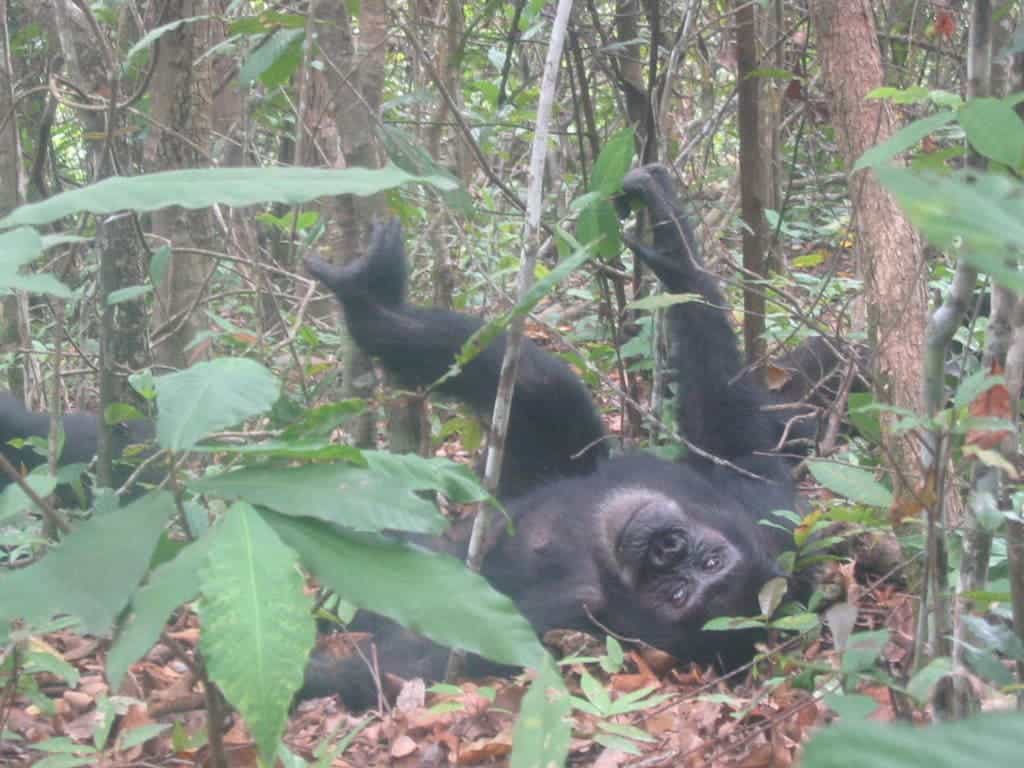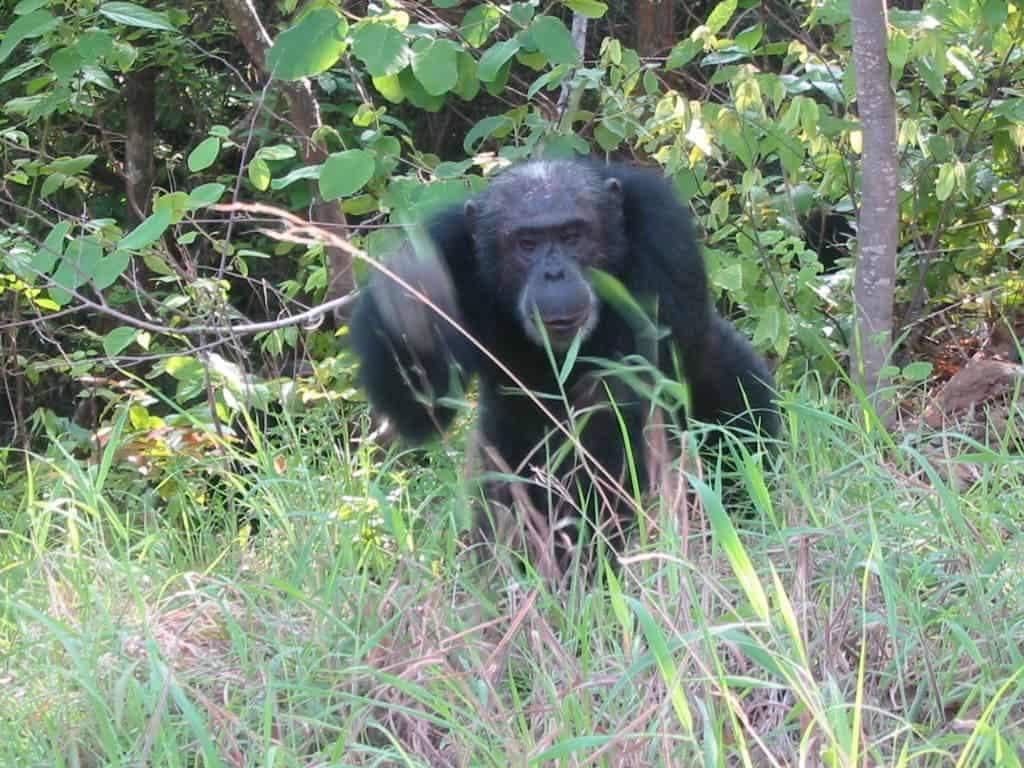Scientists revisited wild chimpanzees in Tanzania after more than 40 years and found evidence of personality stability.

Humans and chimps diverged from a common ancestor only six to eight million years ago. Along with bonobos (Pan paniscus), they’re our closest relatives in the animal kingdom. Bearing this in mind, it’s not all that surprising to learn that chimps share many aspects of human conduct and evolution such as tool use, complex social hierarchies, cultural traits, but also inter-group violence.
Worn friends and old habits
In 1973, Buirski et al. described the personalities of 24 wild eastern chimpanzees (Pan troglodytes schweinfurthii) living in Gombe National Park, Tanzania. The chimps were rated on a personality questionnaire called the Emotions Profile Index (EPI), which assigns scores based on eight major predispositions: Trustful, Distrustful, Controlled, Dyscontrolled, Aggressive, Timid, Depressed and Gregarious.
Most of the EPI ratings were consistent across different researchers which suggests there was an underlying personality to each chimp’s behavior. The researchers were familiar with chimps for several months to several years.
The ratings showed that chimps could significantly differ in their behavioral patterns, with important implications for group hierarchy and organization. The researchers found differences in disposition between sexes, in some respects quite similar to the kind we see in humans. For instance, female chimpanzees were more Trustful than males while males were more Gregarious than females. Alpha male chimps were found to be more Aggressive and less Timid while the lower ranking males were more Dyscontrolled and more Timid. What’s more, some of the rated personalities could be off the charts, much to the surprise of scientists at the forefront of this pioneering 1970s work. One prime example was the case of a female named Passion who showed deviant personality traits. Researchers rated her as more Aggressive, Depressed, and Distrustful, and less Trustful, Timid, Controlled, and Gregarious. In later years, she, along with her daughter Pom, killed and ate four infants belonging to other females in the group.

More than 40 years later, Alexander Weiss, a psychologist at the University of Edinburgh, returned to Gombe for the second systematic quantification of wild chimp personality traits. This new study went the extra mile and gauged the personality traits of 128 individuals using 24 different measures (such as excitable, sensitive, helpful, curious). The individuals in the study also included the 24 chimpanzees from the earlier study, Weiss told me.
“These ratings are continuous variables that indicate, for each chimpanzee, where they stand in comparison to other chimpanzees on a trait. We obtained ratings on 128 chimpanzees including individuals that were observed in detail while alive but who have since died. The present data therefore resemble ratings of the personalities of living and deceased historical figures by people who knew the individuals well, or by historians,” the authors wrote in the journal Scientific Data.
The population studied by the researchers exhibited a wide range of personality traits and behaviors, as Weiss recounted.

“My work for this paper chiefly involved meeting the field assistants and asking them to fill out the questionnaires, and sometimes answering questions via my interpreter. This, to me, was quite exciting because these field assistants were responsible for collecting amazing data on some of the most famous chimpanzees in the world, and they featured in Jane Goodall’s books. I also spent some time at Gombe, though, and just seeing chimpanzees in the wild was awe-inspiring. I witnessed some aggressive interactions between males in which the whole group got agitated, but also saw some juveniles playing, females with their infants, and behaviors that I had only read about or seen videos of, such as the branch clasp grooming display,” Weiss told ZME Science.
When Weiss and colleagues compared their results to those reported by Buirski et al. in 1973, the two lined up ‘surprisingly well’. This was despite the four decades-apart studies employed different questionnaires performed by different researchers.
“Our study collected data using a different questionnaire, one which has been used to study chimpanzees in zoos, research centers, and sanctuaries, and ratings were made by 18 Tanzanian field assistants,” Weiss told ZME science.
“We found evidence that ratings of similar traits in the earlier study were correlated with the ratings that we obtained. More importantly, however, the goal of this paper was to provide a resource that future researchers could use to learn more about the evolution of personality in chimpanzees and humans, too,” he added.
A unique window into the lives of our closest relatives
The personality ratings were made on a modified form of the Hominoid Personality Questionnaire (HPQ), which involved six personality dimensions rather than the eight dimensions employed in EPI. The HPQ dimensions are Dominance, Extraversion, Agreeableness, Neuroticism, Openness, and Conscientiousness. Human personality is typically characterized by five dimensions or the ‘Big Five’ which involve all the aforementioned HPQ dimensions except Dominance.
The EPI and HPQ ratings had at least nine statistically significant correlations. For instance, EPI Aggressive and HPQ Neuroticism positively correlated, which is consistent with the fact that, in humans, the experience of anger and hostile emotions is a facet of Neuroticism. Likewise, the “positive association between EPI Gregarious and HPQ Extraversion is consistent with the fact that gregariousness defined high Extraversion” in previous studies. Gregariousness is a facet of human Extraversion.
There were also, however, some differences in correspondence between a few pairs of personality scales, though the results fit expectations for chimpanzees. For instance, there was a negative association between EPI Timid and HPQ Openness and a positive association between EPI Gregarious and HPQ Openness.
Despite some caveats, the correlations between the two ratings indicate the existence of stable personality traits in the population of Gombe chimpanzees. The dataset could prove insightful for other scientists seeking to understand the evolutionary cues that gave rise to personality traits in both humans and chimpanzees. Rare work such as the present study also provides a unique window into the lives of our species’ closest living relatives. Many chimp populations across Africa are threatened by habitat loss, poaching, and human diseases. By understanding how chimps ‘tick’ and that they’re not all that different in behavior from humans in many respects might thus help conservation efforts a great deal.
“I don’t think this is an original idea, namely as Jane Goodall has brought this up, but I think that one psychological obstacle to improving conservation efforts is that humans tend to think of different species of animals just as that, a species. Individual differences in behavior, emotional reactivity, and other tendencies, that is, the personalities of individuals, are lost in the process. The fact is, however, that chimpanzees very likely differ as much from one another as do we humans, and so losing chimpanzees would mean losing these wonderful individuals and individuals yet to come,” Weiss said.






